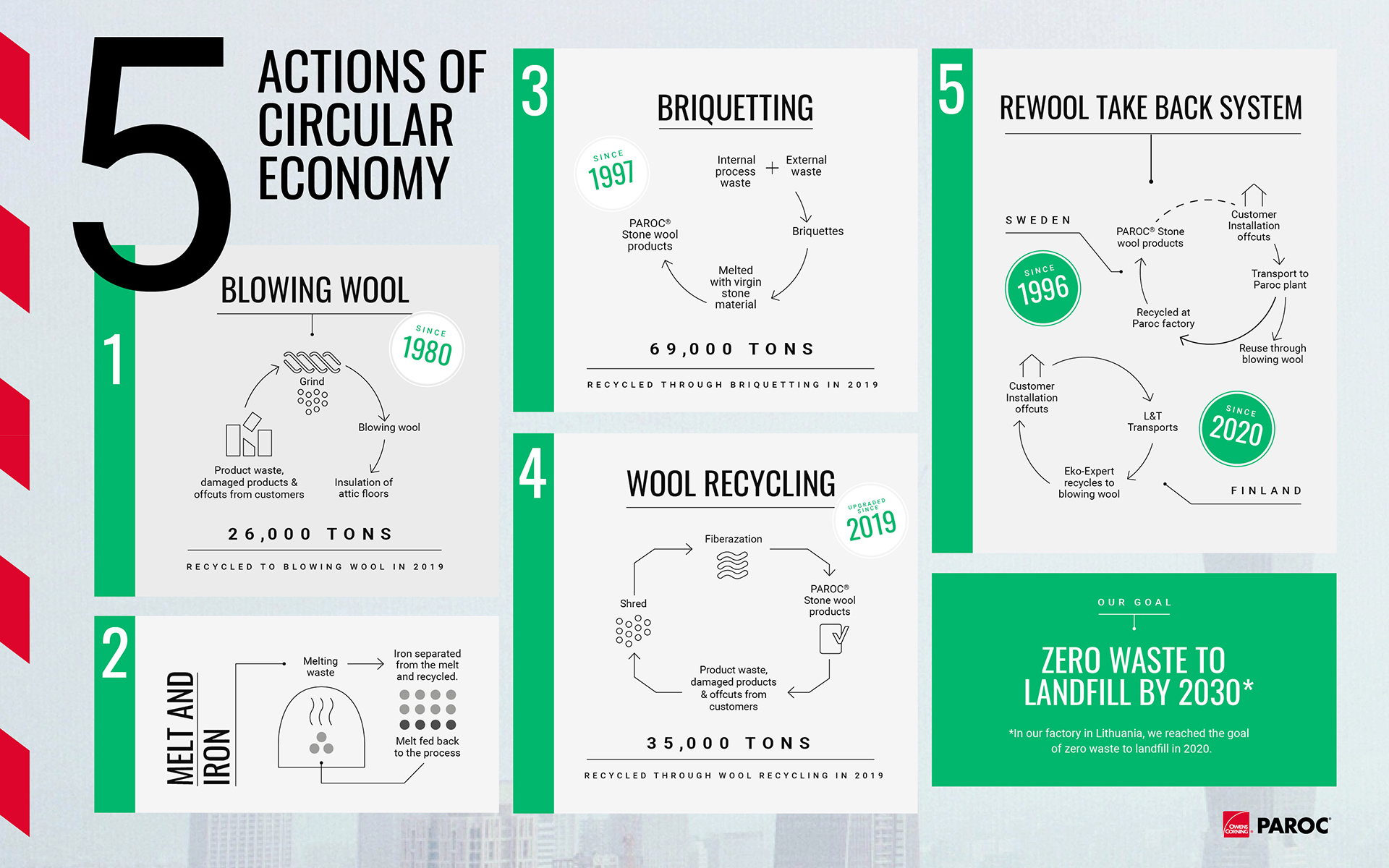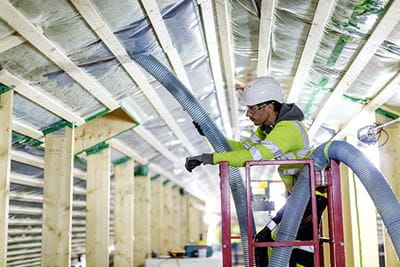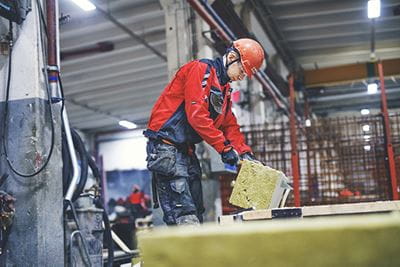
CIRCULAR ECONOMY 16/03/2021
As part of Owens Corning, Paroc has made a commitment to reach a target of zero waste to landfill by 2030. It takes concrete actions to achieve that goal. Here are five of them.
Circular economy does look really simple in drawings: a green arrow forms a circle thus beginning a never-ending motion.
But, what does it actually take to jolt that arrow into motion?
We decided to put together five concrete examples of actions which contribute to a circular economy. These have been and continue to be in use in Paroc factories today.
Actions speak louder than words.
 Let’s start from the 1980s. It has already been 40 years since Paroc began using a technology that enables off-cuts to be shredded into blowing wool. It is then put in bags and sold to customers.
Let’s start from the 1980s. It has already been 40 years since Paroc began using a technology that enables off-cuts to be shredded into blowing wool. It is then put in bags and sold to customers.
It is not just the cutting waste from Paroc’s own production that can be utilized. Also, material that has been sitting in storage, such as somehow damaged or non-prime products, can be used.
In 2019, 26,000 tons of surplus material and products of lower quality were recycled and used for manufacturing blowing wool in Paroc factories.
There is also another way of utilizing and recycling stone wool slabs and production surplus: the material can be ground into fiber shreds and reused directly as raw material to manufacture new stone wool.
Recycling does not require melting or complicated phases which makes it an especially energy-efficient way of recycling insulation material. Paroc recycles yearly 35,000 tons of surplus insulation using it to manufacture stone wool fiber.
The current leader in the utilization of recycled stone wool fiber is the factory in Hässleholm, Sweden.
The latest updated version of recycling technology was introduced there in 2019. Already now, in 2021, the factory can recycle all product waste it produces.
 The REWOOL Take Back system has been in operation already for over 20 years in Sweden. When the system was launched back in 1996, the idea was ground-breaking: the customer packs the surplus waste material in bags and either arranges a delivery or transports the bags to a Paroc factory. The factory then reuses the surplus material and manufactures either blowing wool or recycled stone wool fiber.
The REWOOL Take Back system has been in operation already for over 20 years in Sweden. When the system was launched back in 1996, the idea was ground-breaking: the customer packs the surplus waste material in bags and either arranges a delivery or transports the bags to a Paroc factory. The factory then reuses the surplus material and manufactures either blowing wool or recycled stone wool fiber.
There is, actually, also a third way in which Swedish factories can utilize recycled surplus material using the REWOOL system. This is by manufacturing briquettes. But, first, a few words about Finland.
In 2020 Paroc REWOOL was launched also in Sweden’s eastern neighbouring country. In Finland, customers’ surplus material is recycled in cooperation with two companies. One of them, Eko-Expert, uses recycled material to manufacture blowing wool.
Manufacturing stone wool produces not only some surplus but also other process waste. This is waste that cannot be used as a raw material to manufacture blowing wool or recycled fiber. Luckily, most of it can be recycled by briquetting.
But what are briquettes? They are waste from different steps in the production process as well as some waste from installed environmental cleaning processes. These are pressed together with concrete and stone aggregate.
A finished briquette slightly resembles a soda can. Half of the material is waste generated by the factory. The other half includes recycled material from an outside source.
The best part, though, is that briquettes can be used as raw material in making new PAROC® stone wool products. In 2019, briquetting enabled the recycling of 69,000 tons of waste at Paroc factories.
As part of Owens Corning, Paroc has made a commitment that by 2030, none of the factories will produce waste destined for landfill. Hässleholm is already close to zero: of all waste produced by the factory only 6 percent will be sent to landfill.
It is beaten only by a factory situated in Vilnius, Lithuania. It achieved the goal of zero waste to landfill in 2020.